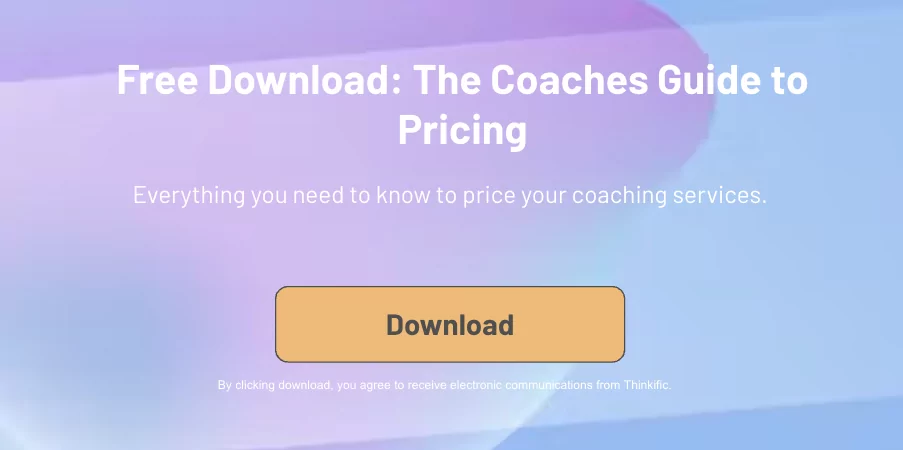Starting a coaching practice is a popular and profitable idea. The coaching industry in the US passed the $1 billion a year mark in 2018 and is expected to reach $1.34 billion in 2022, with an annual growth rate of 6.7%.
Coaching is a great choice not only for those seeking to break out of their 9-5 routines — it’s a perfect way for anyone to expand skills, share their expertise, and make some money on the side.
If you’ve recently started your own coaching business and it took off — congrats! If you’ve made the first steps, but you’re still struggling to get your practice in full swing, this guide is for you.
Read on to find out how to scale a coaching business without burning out.
Why coaching businesses are hard to scale
When you’re at the beginning of your coaching journey, you might find yourself spending most of your time looking for clients — and not that much time actually coaching. Once your lead generation efforts start paying off and you get more clients, you gradually spend less time looking for new business. Then, your business growth may slow down again, and you might even find yourself in the red if some of your clients churn.
Inherently, coaching is an active, not passive, business. You’re limited by the number of hours in a day, especially if you want to work sustainably and rest on the weekends.
Because of this, supply and demand in coaching is a tricky balance.
Increase demand too much, and you end up with too many clients you can’t devote enough time to. On the other end of the spectrum, there’s the unfortunate scenario of not enough demand (not having enough clients to serve = losing money).
That said, the question of how to scale a coaching business is not unique. Thousands have done it before you, and you can do it too. All you need are some effective and efficient scaling strategies.
3 ways to scale a coaching business
There are three primary approaches to scaling your coaching business:
- Product – You can develop new products or services that allow you to charge more, spend less time, or do all the work upfront.
- Delivery – You can fine-tune the way you connect with your target audience. For example, you can coach groups of people or build an agency and hire more coaches to work with you.
- Operations – Becoming a more efficient operator and minimizing admin work is key to managing costs and growing the most profitable parts of the business.
Overall, what you’re trying to do is create leverage that multiplies your outcome with the same level of input.
Let’s discuss each approach in more detail and add a few examples.
1. A product approach to scaling your coaching business
The first element of your coaching business you can tweak is the product or service you sell. The key is to make your service less dependent on your time or create a new product that won’t require your active involvement over time.
Here are some product-centric ways to scale your business:
Write a book. As you grow your coaching practice, make sure to keep detailed notes, with observations, advice and examples. Soon enough, you’ll have enough valuable material to create content, like an eBook or book. While writing a book takes time, you only have to do it once, and you’ll be able to reap the benefits for years to come. You can also use the book as leverage to line up more opportunities, such as speaking gigs.
Get speaking engagements. Presenting at conferences is not only a great way to occasionally supplement your coaching income, it also elevates your profile as a coach and helps get more potential clients into your practice.
Increase prices. If the demand for your coaching services is high enough, the best way to manage it is to raise your prices. You’ll free up your schedule and make your business more profitable at the same time.
Create and sell an online course. By far the best product that most coaches can create with the knowledge they already have is an online course. Online coaching packages sell for less than personal coaching sessions but are more accessible to people worldwide. They also have a better time-for-money ratio and yield a high ROI (return on investment).
Most people think creating an online course is difficult and requires advanced technical skills. That’s not the case if you use an intuitive course-building platform like Thinkific.
With Thinkific, you can create an online course without any programming or design skills. You can pick a style from professionally designed templates and easily customize your course modules with the intuitive drag-and-drop interface.
When you’re all done, you can sell your course right on Thinkific as well. Offering your course to the world can help you get more visibility and potentially add customers to your one-on-one coaching pipeline.
Launch your course in time before the next shopping holiday (e.g. Black Friday or Cyber Monday) to get an even bigger boost to your sales. Watch this quick tutorial to see how easy it is to get started.
2. A delivery approach to scaling your coaching business
At the beginning of your coaching career, you’re likely meeting with clients in person, and it’s you who’s doing all the work. Diversifying your coaching offering might result in a steadier and healthier business.
Consider three different operational scales.
Low-scale: one-to-one. The smallest scale of coaching businesses is having to sit down with clients individually. Even if you charge a lot for your services, you’ll quickly hit the ceiling once all your available time slots are booked up. It will be difficult to scale past this point.
Mid-scale: one-to-many. To resolve the low-scale problem, you might try to hire other coaches to work one-on-one with your clients. This will, however, create admin and management work for you. The mid-scale approach tends to work for businesses where coaching is relatively simple and not centered around your persona.
High-scale: one-to-many or many-to-many. A more scalable coaching approach is to create as many opportunities for one-to-many coaching as you can. This means introducing group coaching, workshops, special presentations, etc. The idea is that you can charge per person and multiply the amount by the number of people in attendance.
With time, you can even hire other coaches to do the same and turn your model into a full many-to-many service.
While some people argue that by introducing other people into your practice will require you to lower your prices (compared to one-to-one), it could actually be a great thing.
First, by offering lower prices, you’d naturally increase demand. Second, you could diversify your pricing model and charge less for group programs than for individual sessions.
3. An operational approach to scaling your coaching business
There’s an adage that says you should work on your business and not in your business if you want to be a successful entrepreneur.
In fact, if you’re always coaching, you don’t have the time for strategic planning and figuring out how to scale your coaching business.
One way to avoid that is to automate your operations and have a template or standard process for anything, especially admin work.
If you can’t automate something, hire a virtual assistant or contract the admin work out. Similarly, if you personally don’t need to be teaching something, find another coach for it.
With products like online courses built with Thinkific, automation and operational efficiency always remains high. You practically don’t need to do anything but create a course once and continue marketing and selling it for a long time. That’s why online courses can be such a boost to any coaching practice.
Turn your coaching business into a profit machine
The best part about all the coaching program strategies above is that they’re not mutually exclusive. You can try to incorporate all the levers — product, delivery and operations — into your practice and efficiently grow your business in record time.
The most important thing is to start moving. With Thinkific, you can create your first online course today and get it in front of your customers right away.
Try Thinkific for free today and see how easy it is to build, market, and sell a money-making online course. No tech skills required.
Use Thinkific to make a bigger impact on your clients and earn more revenue — without trading your time for money.

This blog was originally published April 2022, and was updated October 2022 with more resources.









